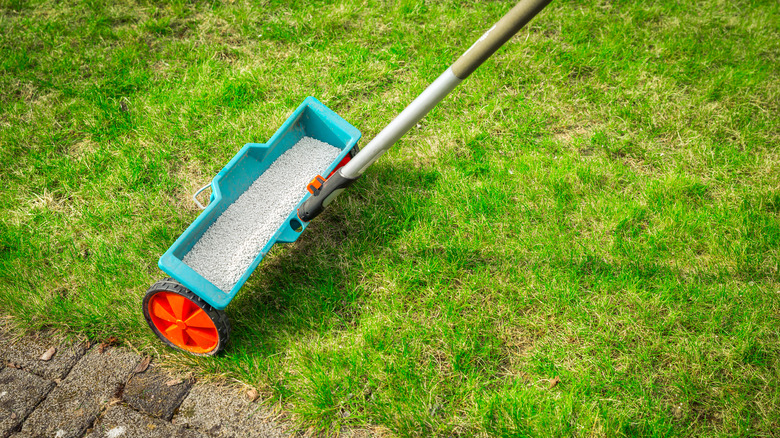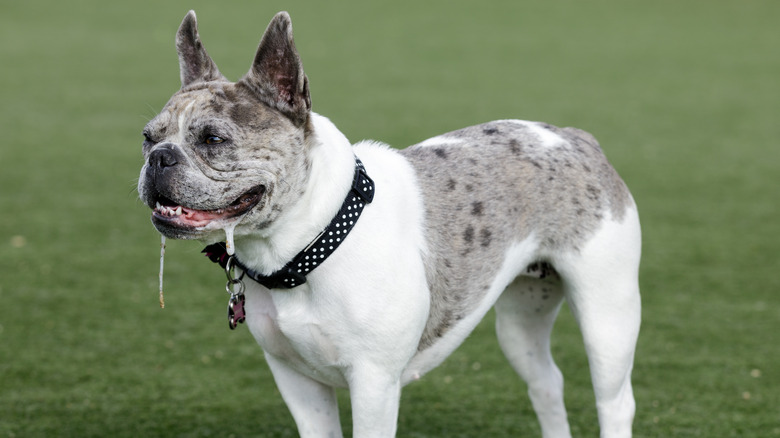Playing catch with your dog on your sprawling, luscious lawn is a wonderful pastime. It’s great exercise for your four-legged friend and a great way to get outside and enjoy nature for you. Nevertheless, many of us treat our lawns with weed and feed, meaning chemicals meant to kill weeds and fertilize our lawns can be all over our yards. But weed and feed products can have grave impacts on the health of our furry friends.
Weed and feed products often contain herbicides and pesticides, such as 2, 4-D, and Dicamba, which can be harmful to animals. When pets come into contact with treated lawns or ingest contaminated grass, they may suffer adverse health effects, as pets are more vulnerable to these toxic substances due to their smaller size and different metabolism. Therefore, using weed and feed products without proper precautions or alternatives can pose serious health risks to your beloved furry companions. It’s essential to prioritize their safety and explore pet-friendly lawn care options.
How to keep pets safe when treating your lawn

When using weed and feed products to treat your lawn and protect your pets, it’s crucial to take certain precautions to ensure their safety. Carefully read and understand the instructions on the weed and feed products. Look for specific information about pet safety and the waiting period before allowing pets on the treated lawn. Opt for weed and feed products that are labeled as pet-safe or dog-friendly. These formulations are designed to minimize harm to animals while effectively targeting weeds.
Prior to applying the weed and feed, remove your pets from the area. Place them in a secure, separate space, such as indoors or in a fenced-off area, until the product has been thoroughly watered in and the lawn is dry. After applying the weed and feed, water the lawn as directed on the product label. Adequate watering will help the chemicals penetrate the soil and reduce the risk of contact with pets through the grass blades. Respect the waiting period mentioned on the product label. This period typically varies from a few hours to a couple of days. During this time, prevent your pets from accessing the treated lawn, and keep them off the lawn until you are confident that the chemicals have dissipated or been absorbed into the soil.
What to do with possible exposures

To avoid exposing your pet to harmful chemicals after treating your lawn, regularly groom and clean your pets in the days following the application of the weed and feed. Wipe their paws and fur after walks or outdoor play to minimize potential exposure to remaining residues. If your pet has been exposed to weed and feed chemicals, it’s essential to act quickly and take appropriate measures to ensure their safety and well-being. Immediately take your pet away from the treated lawn and bring them indoors or to a safe, uncontaminated space. Protect yourselves with gloves and protective clothing when handling your pet, especially if they have chemicals on their fur or paws. Gently bathe your pet with lukewarm water and pet-safe shampoo. This will help remove any residue from their fur, skin, and paws. Do not use any harsh chemicals or human cleaning products, as they can worsen the situation.
Monitor your pet closely for any signs of distress, such as vomiting, diarrhea, excessive drooling, difficulty breathing, tremors, or seizures. If you notice any unusual behavior, contact your veterinarian immediately, and follow their advice for further steps and potential treatments, as they will be able to assess the severity of the situation and provide specific guidance based on your pet’s health condition. After exposure, it’s best to keep your pet indoors and away from treated areas until the chemicals have fully dissipated or as advised by your veterinarian.